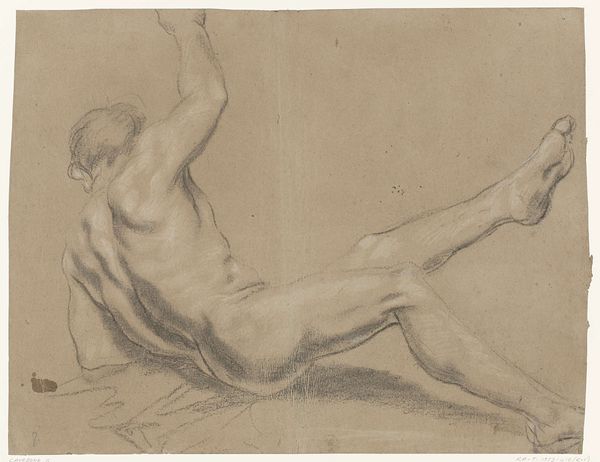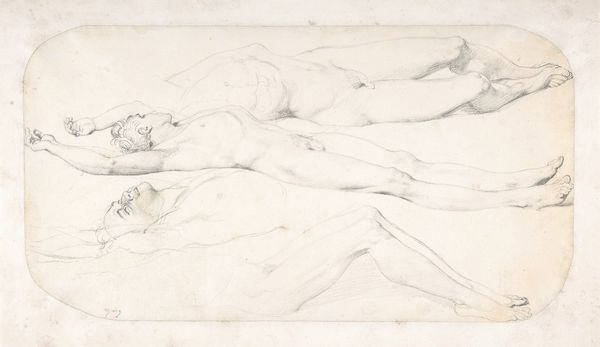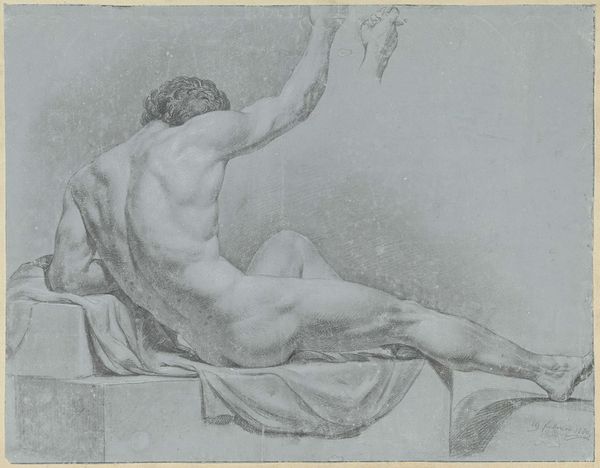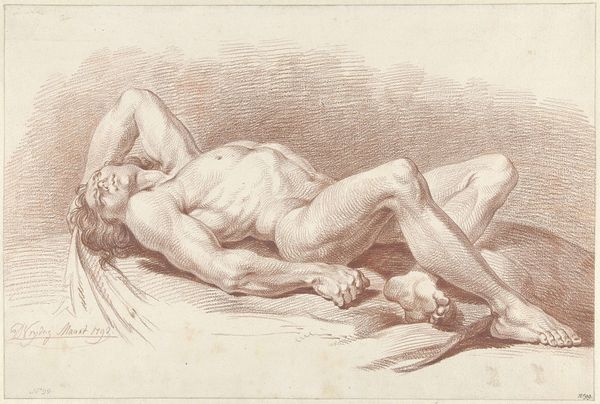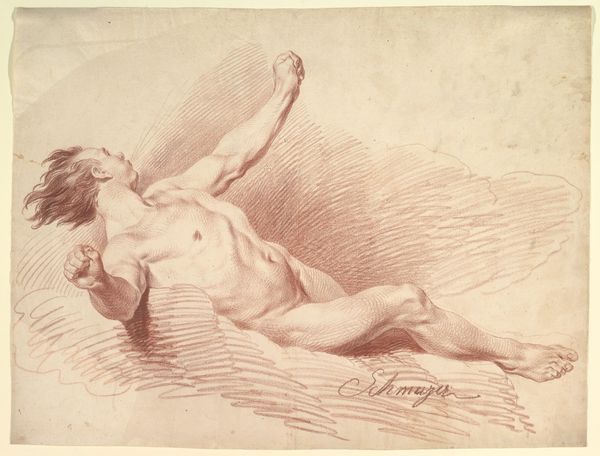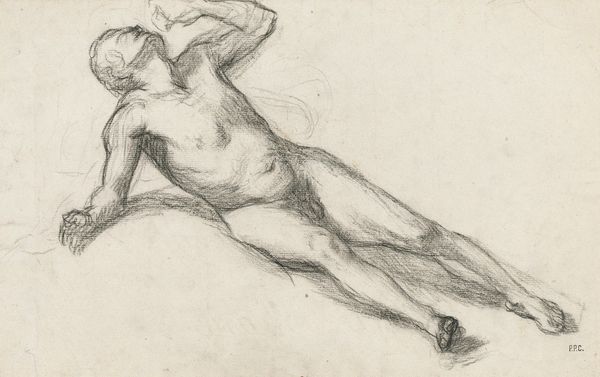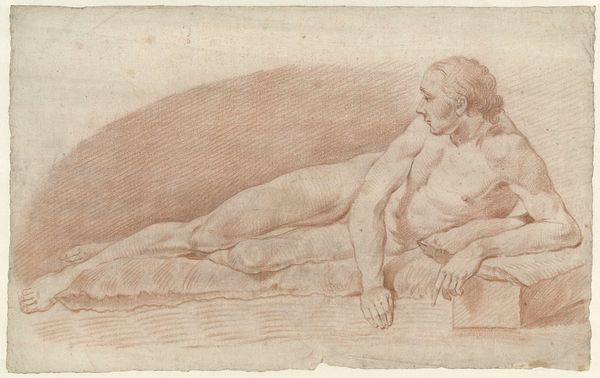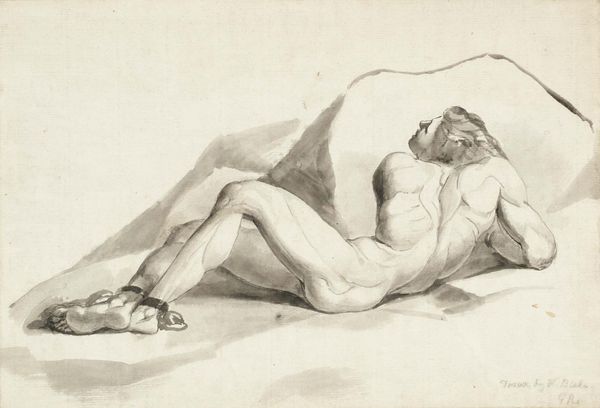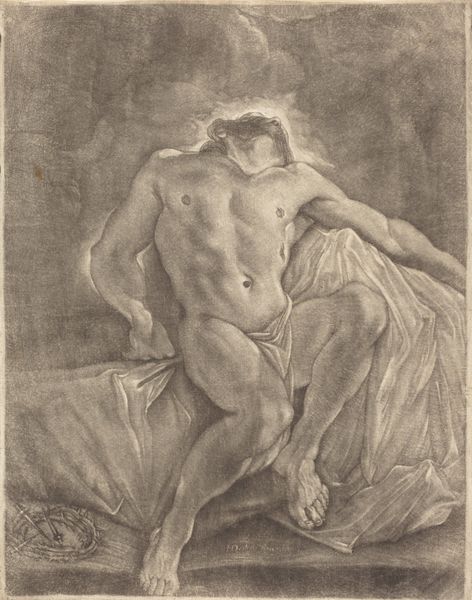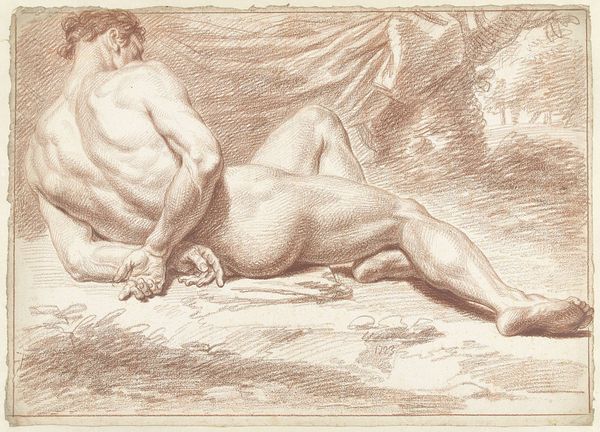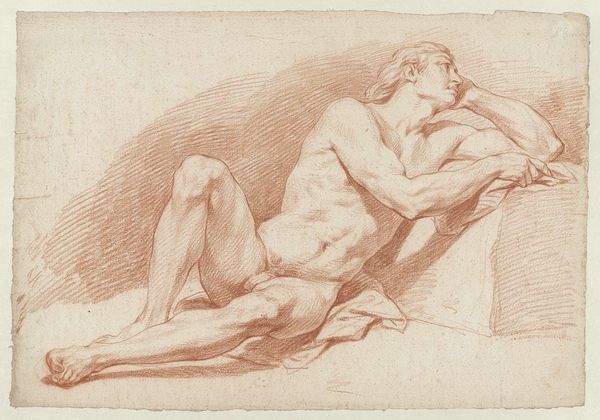
drawing, pencil
#
portrait
#
pencil drawn
#
drawing
#
neoclacissism
#
figuration
#
pencil
#
portrait drawing
#
academic-art
#
nude
#
male-nude
Copyright: Public Domain: Artvee
Curator: Looking at "Male Nude Reclining on a Divan" by Anne-Louis Girodet, circa 1793, rendered in pencil, what strikes you first? Editor: Oh, definitely the languid pose. There's this air of absolute ease, almost dreamy. It feels both intimate and distant, you know? Like we're intruding on a private moment of reverie. Curator: Indeed. Girodet was working in the Neoclassical style, a period obsessed with ideal forms and returning to classical antiquity. This drawing exemplifies that—notice the emphasis on anatomical precision. These images played a crucial role in the politics of the male nude, solidifying Western art and solidifying its ideals. Editor: But it’s interesting how he departs from that "ideal," too. There's a softness in the rendering, a vulnerability in the pose that transcends mere anatomical study. The light isn't harsh or definitive, it's diffused and tender. It feels almost… romantic? Despite being academic? Curator: Absolutely. While deeply influenced by his teacher Jacques-Louis David, and therefore adhering to Neoclassical tenets, Girodet was pivotal in prefiguring Romanticism, and you see glimpses of it here. These drawings allowed him space to work out tensions between reason and emotion. Editor: The political backdrop, though, feels important. A drawing of this nature being created at the height of revolution! How might viewers have encountered it? Curator: Consider this: it was most likely produced within an academic context—the artist exploring form and anatomy through the life model. It was probably a private study, never intended for wide distribution, unlike the finished paintings on public display which aimed to shape morals, to uplift and educate. Drawings such as this one give us access to more experimental ideas circulating amongst artists themselves, even if those were not accessible to the general population. Editor: So it’s like a quiet, personal counterpoint to the grand public narratives of the time, reflecting an artist wrestling with beauty and form, both for his skill, and as a precursor to deeper shifts within the culture. It hints at things to come. Thank you for expanding the space beyond only beauty, to its context as a key to understanding culture! Curator: The pleasure was all mine. It has made me reflect on that subtle dance between private contemplation and public expectation during moments of social transformation, like right now, still relevant!
Comments
No comments
Be the first to comment and join the conversation on the ultimate creative platform.

